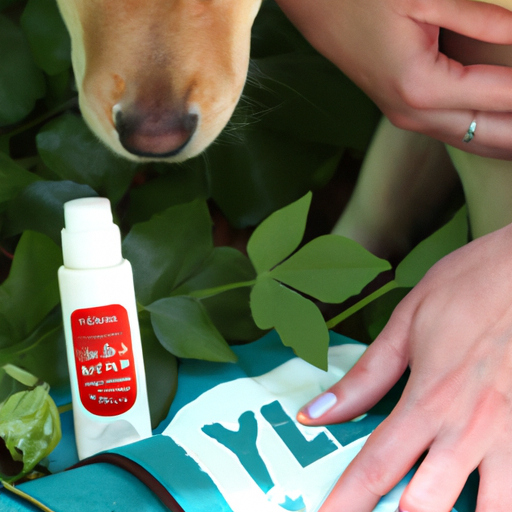H2: Understanding Poison Ivy and Dogs
You may be surprised, but your four-legged friend is much less susceptible to poison ivy than you are. Dogs have a protective layer of fur which shields their skin from the plant’s harmful oils. However, this doesn’t mean they’re completely immune. If the oils manage to reach their skin, they can suffer from the same itchy and uncomfortable rash as humans do.
It’s also important to note that while dogs may not be highly affected by poison ivy, they can act as carriers, bringing the plant’s oil into your home on their fur.
H2: Identifying Poison Ivy Exposure in Dogs
Just as in humans, the symptoms of poison ivy in dogs usually appear within 24 to 48 hours of exposure. Look out for:
- Redness or swelling
- Itching, which may lead to excessive scratching or biting at the skin
- Blisters or sores
- Possible fever
If you notice any of these signs, it’s likely that your dog has come into contact with poison ivy.
H2: Treating Your Dog’s Poison Ivy Exposure
Here’s a step-by-step guide on how to manage your dog’s poison ivy exposure:
- Put on protective gloves: You don’t want to risk getting poison ivy yourself!
- Bathe your dog: Use a pet-friendly shampoo and lukewarm water. Make sure to rinse thoroughly to remove all the oils.
- Apply a soothing cream: Consult your vet about a suitable cream to alleviate your dog’s itchiness.
- Monitor your dog: Keep an eye on your dog’s condition and take them to the vet if the symptoms worsen or persist for more than a few days.
H2: Preventing Future Exposure
Prevention is always better than cure. Here are some tips to keep your dog safe from poison ivy:
- Familiarize yourself with what poison ivy looks like and avoid these areas during your walks.
- Regularly groom and check your dog’s fur and skin, especially after outdoor activities.
- Teach your dog commands like “leave it” to prevent them from sniffing or touching harmful plants.
H2: When to Seek Professional Help
If your dog’s symptoms persist or worsen after home treatment, it’s time to seek professional help. This table outlines when you should definitely contact a vet:
| Condition | Action |
|---|---|
| Symptoms persist or worsen after a few days | Contact your vet |
| Your dog seems to be in pain or discomfort | Contact your vet |
| Your dog has difficulty breathing | Seek emergency veterinary care immediately |
FAQ
Q: Can dogs get poison ivy?
A: Yes, although it’s rarer than in humans due to their protective fur.
Q: How long does poison ivy last on dogs?
A: It usually clears up within a few days with proper treatment.
Q: Can I use human medicine to treat my dog’s poison ivy?
A: No, always consult your vet before applying any medicine to your dog’s skin.
Q: How can I prevent my dog from getting poison ivy again?
A: Regular grooming and avoidance of areas with poison ivy can help prevent future exposure.



